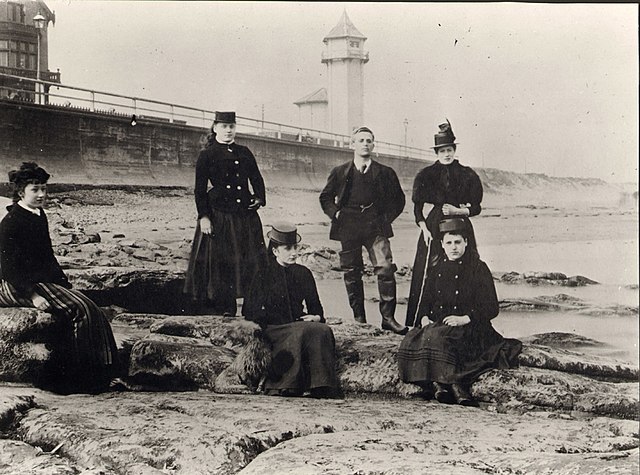Nowadays, for many people, an annual holiday – or even several annual holidays – are not just welcomed, they are accepted as the norm. Indeed, when the Covid pandemic meant that we were restricted to our home territory, at times even to our home town, then we felt hard done by. On the top of many people’s wish list was to ‘go on holiday’ as soon as travel restrictions were lifted.
But it wasn’t so very long ago that the whole concept of ‘going on holiday’ was a luxury available only to the wealthier groups in our society. Anyone who has lived close to any part of the British coastline will be familiar with day-trippers and the times of year when a quiet resort in winter can explode during summer months. Queues for fish and chip shops, candy floss stalls and amusement arcades – not to mention parking spaces – remove any chance for locals to stroll along their favourite promenade for a peaceful afternoon out.
It was during the Victorian age that seaside resorts really took off, with the ‘industrial working class’ making use of the new railway network to travel to the coast on a Sunday, which might have been their only day off. Root around in any antique shop and you are bound to find postcards showing scenes of well-dressed Victorian women with their parasols, and fully clothed bathers venturing towards the sea in a horse-drawn bathing machine.

Fast forward to the 1920s and 1930s and the day trip was often still the only chance for a brief respite from the arduous working week. It wasn’t until 1938 that the Holidays with Pay Act was passed, enabling all workers to one week’s paid holiday a year. Some employers even chartered special trains to take their employees to the coast. Boarding houses were soon fully booked, leading holiday camps to open up in popular resorts, such as Blackpool, Brighton and Bognor. Butlins led the way, with an affordable fixed price for ‘all-in-one’ holidays for all the family. Families could get a week’s full board holiday with three meals a day and free entertainment included – all from as little as 35 shillings a week.
Then came the Second World War, when the only travel that could be contemplated experienced by the fighting force, sent across Europe and beyond to defend our shores. But as soon as the war was over the thought that it might once again be possible to ‘have a holiday’ was a dream for many, leading one factory worker from Coventry to report in July 1946:
‘thousands of people, walking aimlessly through the streets or standing in queues for buses to take them a few miles away for a change from the every-day…’
‘Austerity Britain’ by David Kynaston
It would be another twenty years or more before the ‘package holiday’ was available to working people, with the advent of cheap flights and affordable hotels springing up in Spain and Greece. But until then Britain’s precious seaside resorts would continue to flourish, with thousands flocking to the coast, not just for their one week per year, but still on the much-loved day trips, following in the footsteps of our Victorian ancestors.
Reblogged this on Isabella Muir and commented:
Imagine a time when just one week’s holiday a year was considered a treat, with many British workers never managing more than a day trip to the seaside…
LikeLike